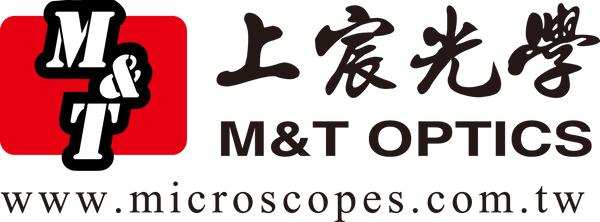Binocular microscope observation
Share
Compound (biological) microscopes also have binocular observation heads. What is the difference between them and stereo microscopes?
When we were young, our nature teacher taught us to open both eyes when using a microscope, with one eye pointed at the eyepiece/one eye looking at the white paper, and drawing what the microscope saw on the paper. In the digital age, now we can easily use mobile phones with special A stand can take clear images, hand-painting seems unnecessary, and a binocular microscope allows two eyes to work together at the same time.

Binocular observation head:
Different from the monocular structure, the binocular biological microscope uses a set of lenses to equally distribute the light from the lower objective lens to the left and right eyes. Since the images are from the same objective lens, the magnification is high and the depth of field is shallow. It is difficult to distinguish between far and near objects, and there is no sense of distance (three-dimensional sense). The standard binocular observation head usually equipped has an inverted image, unless there are special circumstances. Only choose an erect image observation head when necessary. In terms of a single objective lens and a sense of three-dimensionality, it has a completely different visual sense and use from a stereoscopic microscope.
Binocular observation can greatly improve the comfort of using a microscope. Since the image is converted by the human brain by receiving signals from the optic nerve, the image converted by only one set of optic nerves is compared with the image converted by the superposition of two sets of optic nerve signals at the same time. The resulting visual experience is brighter and clearer, and more details can be observed. You can give it a try. The difference between reading calligraphy and painting with one eye with one eye closed tightly and reading calligraphy and painting with both eyes open at the same time will be obvious. At the same time, it will also avoid the fatigue and discomfort of closing one eye tightly. If you often take a peek , a binocular microscope is definitely worth the investment.

How to operate the binocular viewing head
Step 1: Adjust pupillary distance
Using binocular observation is in line with human intuition. In operation, you need to adjust the pupil distance of the two eyes first. Usually the binocular observation head has a hinge design, which can change the distance between the two eyepieces to match the width of the eyes. The pupil distance of a normal person is between 48mm and 55mm. During the viewing period, just put your eyes close to the eyepieces and twist the hinges of the two eyes to adjust the field of view so that both eyes can see the entire picture at the same time.
Step 2: Suitable good viewing distance
What is "good visual distance"? It is the optimal viewing distance between the eyeball and the eyepiece lens. Usually when designing eyepieces, the viewing distance between human glasses and eyepieces will be taken into consideration. Modern people often wear glasses, and many researchers also wear goggles. Therefore, modern microscope designs are often designed with a long viewing distance. The eyepiece is usually between 15 and 25mm. That is to say, if you are a person who wears glasses, when observing the microscope, the distance between the glasses lens and the eyepiece lens is about to reach. If you have good eyesight and do not wear glasses, when observing a microscope, your eyeballs must be a certain distance away from the eyepiece, which is the good visual distance, in order to get the best field of view. What will happen if the distance is less than the good visual distance? If the eyeball is too close to the eyepiece, the field of view will shrink and the image will have black shadows shaking.
Step 3: Adjust and correct the parallax (degree difference) between the two eyes
There may be some power difference between the eyes of a person. Even if you wear glasses to correct it, the power difference will still exist. When we do a vision test, we often still find that the power of the two eyes is different. The parallax adjustment of some microscopes is designed on the eyepiece holder of the binocular observation head, some are adjustable for one eye, and some are adjustable for both eyes. Some microscopes are designed with adjustable diopter eyepieces, and there are power adjustment rings directly on the eyepieces. First, use the focus adjustment wheel of the microscope to focus the image of the unadjustable eye. At this time, close the single eye tightly and check whether the other eye is equally clear. You can rotate the power adjustment ring to keep the image clear to the other eye. Then open both eyes at the same time to allow the brain to overlap and synthesize the images of both eyes. If you feel that you need to adjust, repeat the above steps until you feel the clearest and most comfortable when observing both eyes at the same time.
